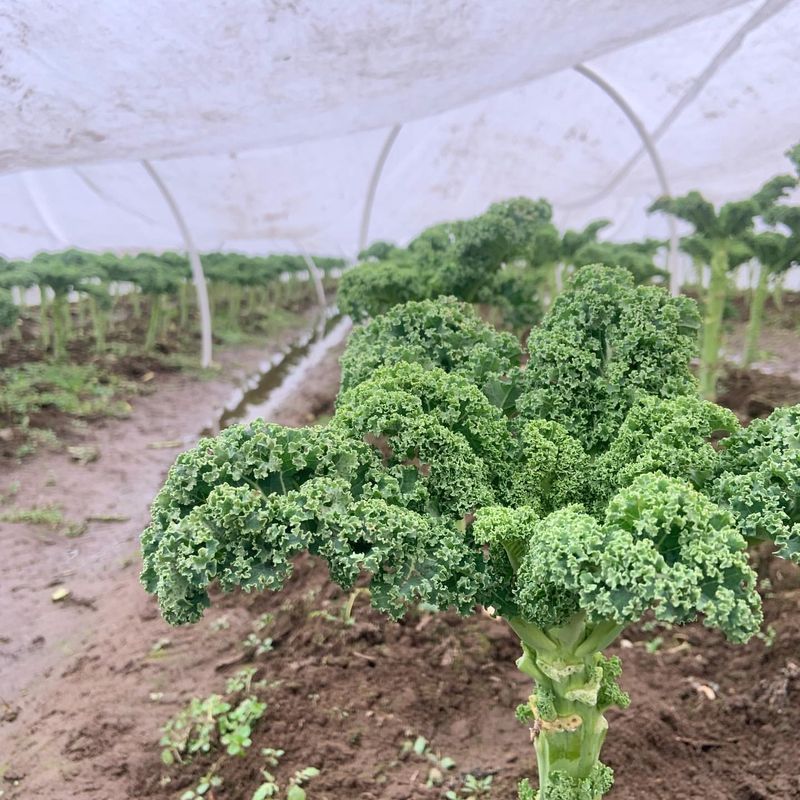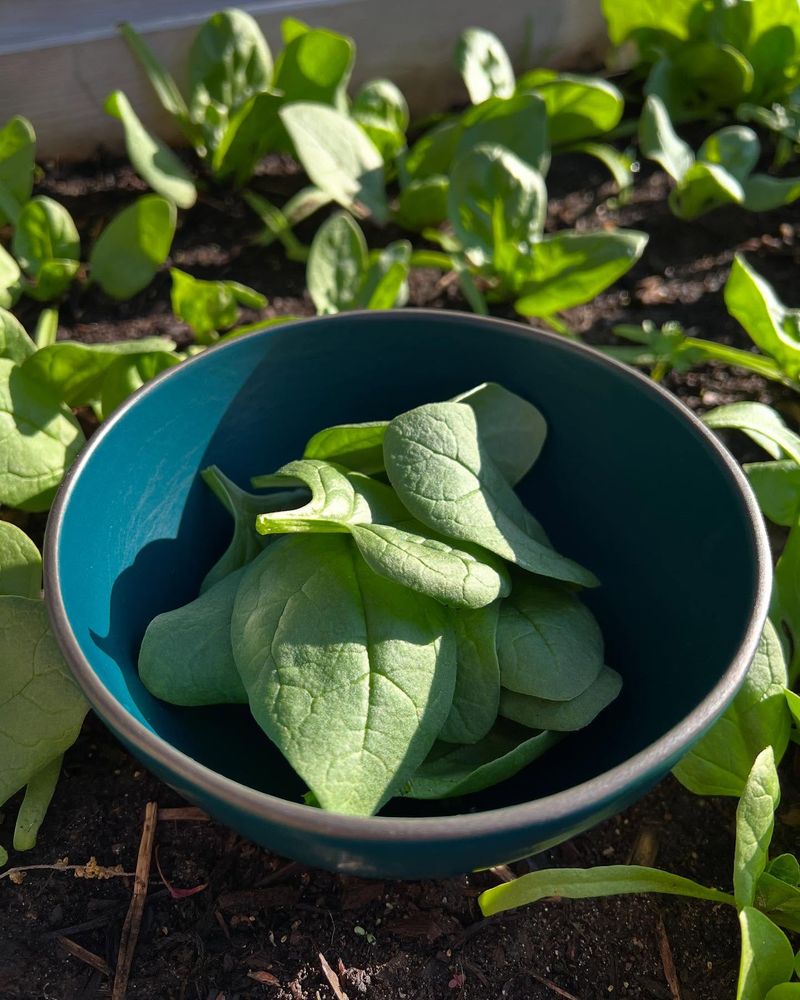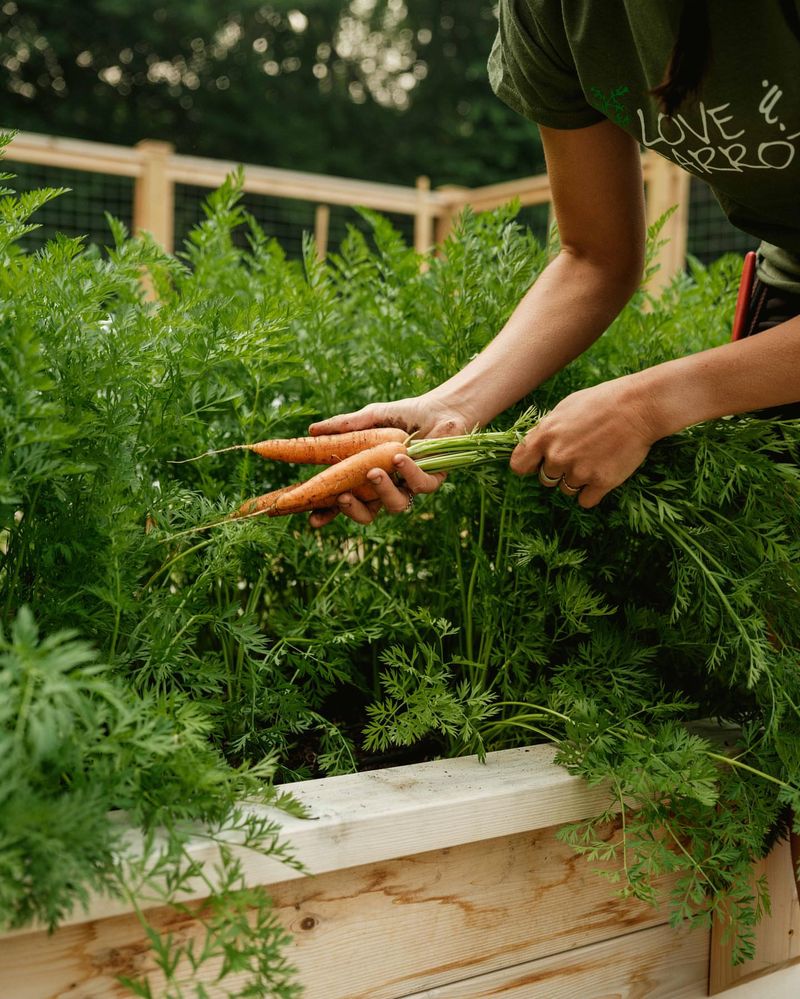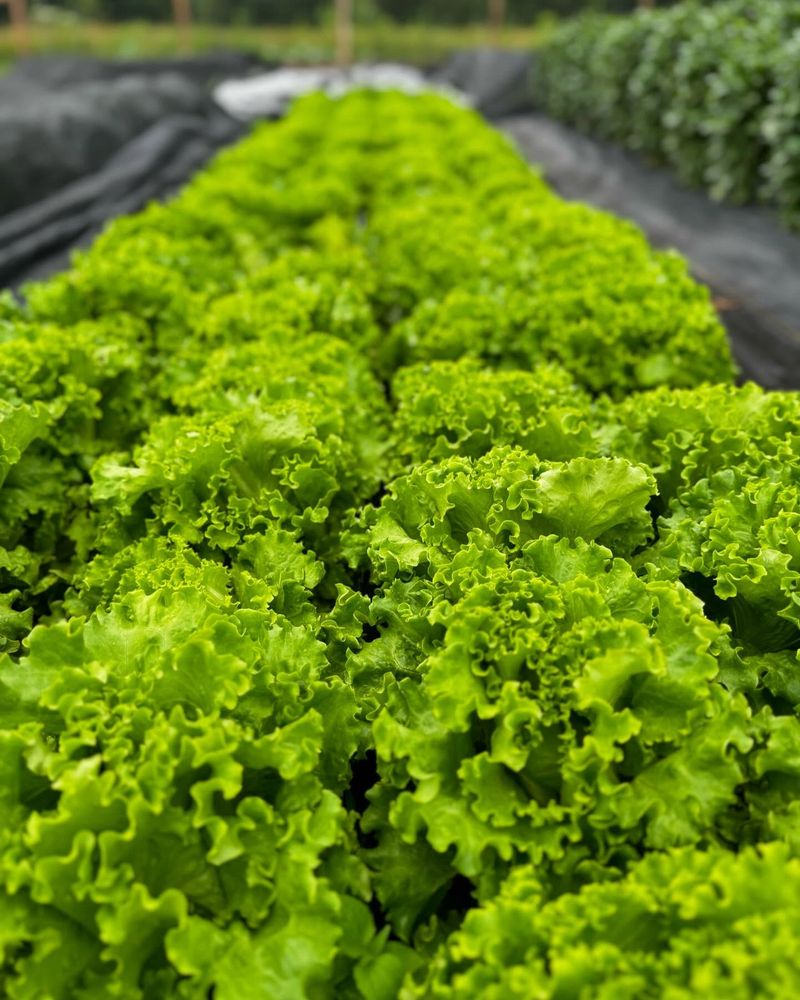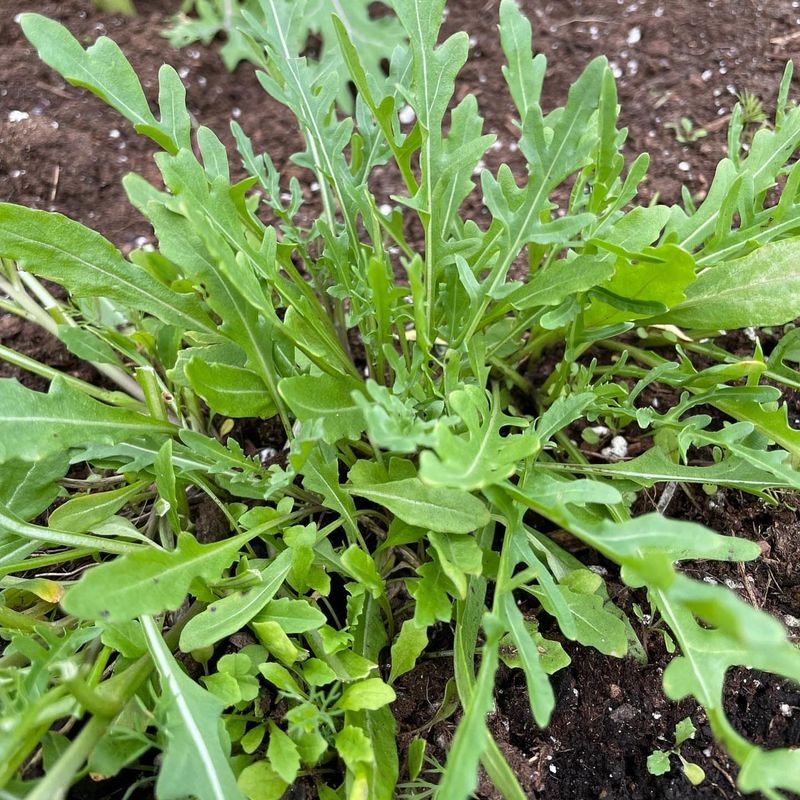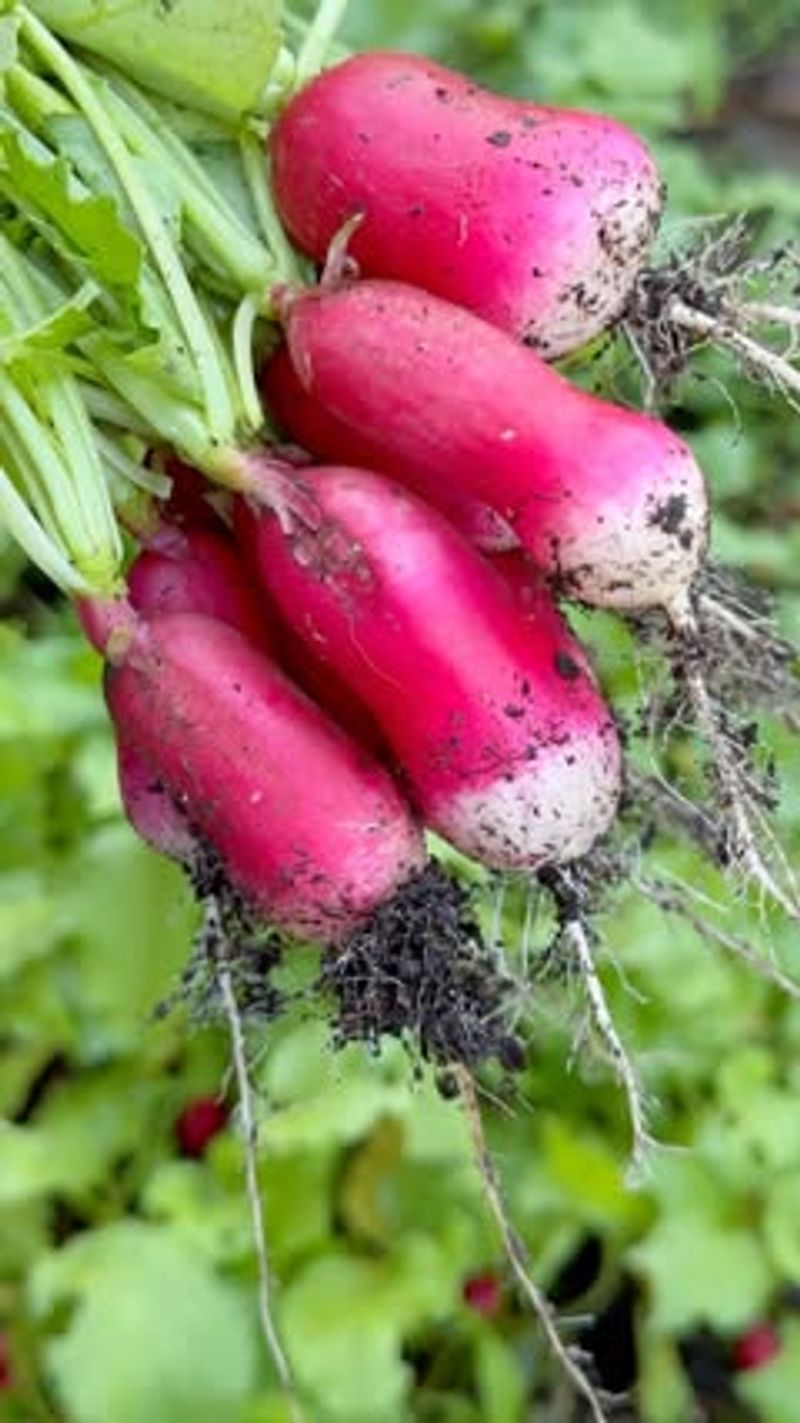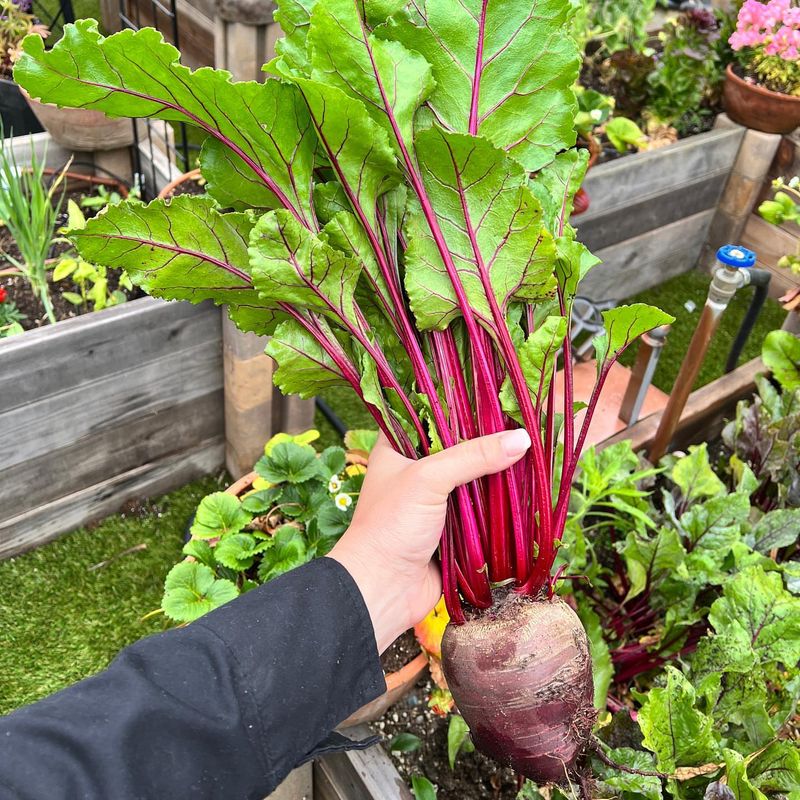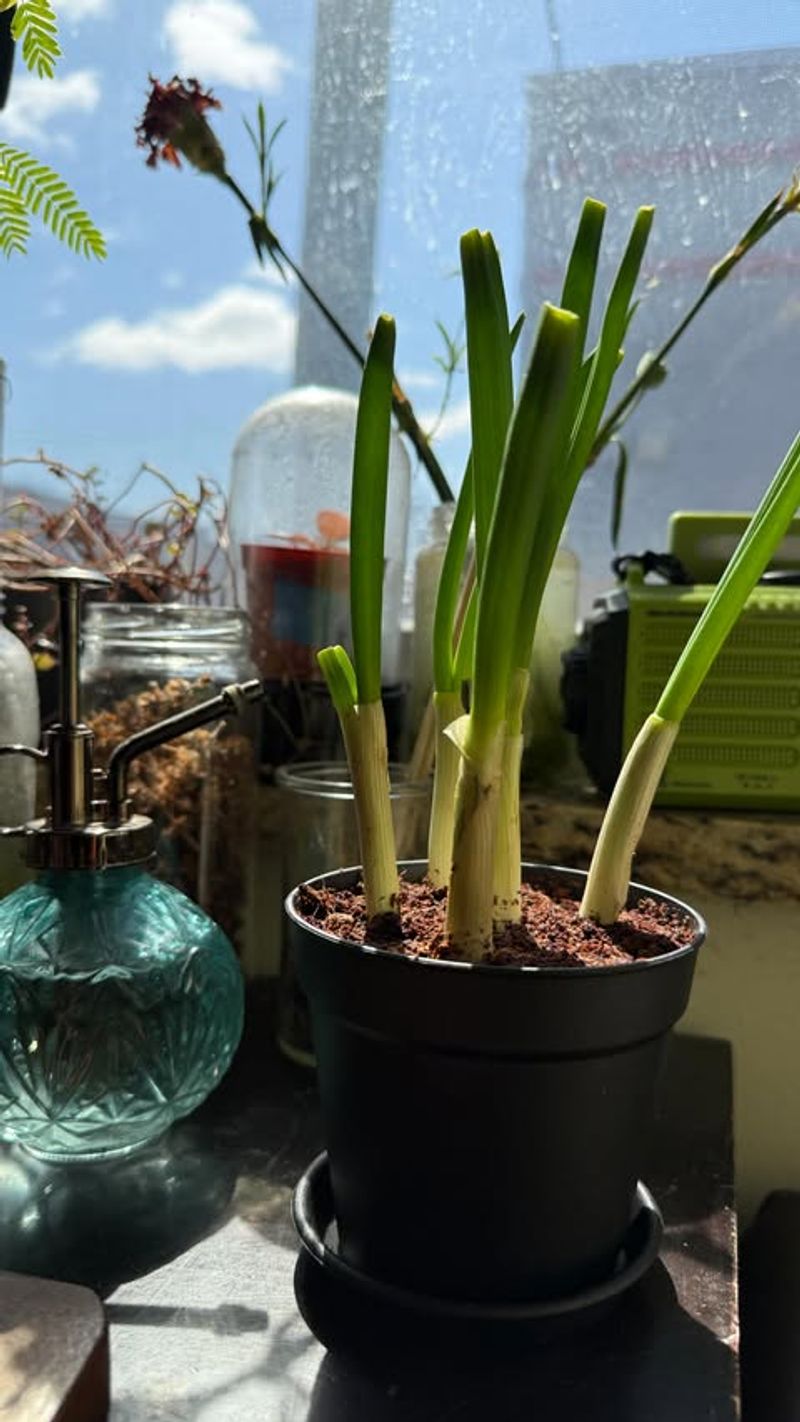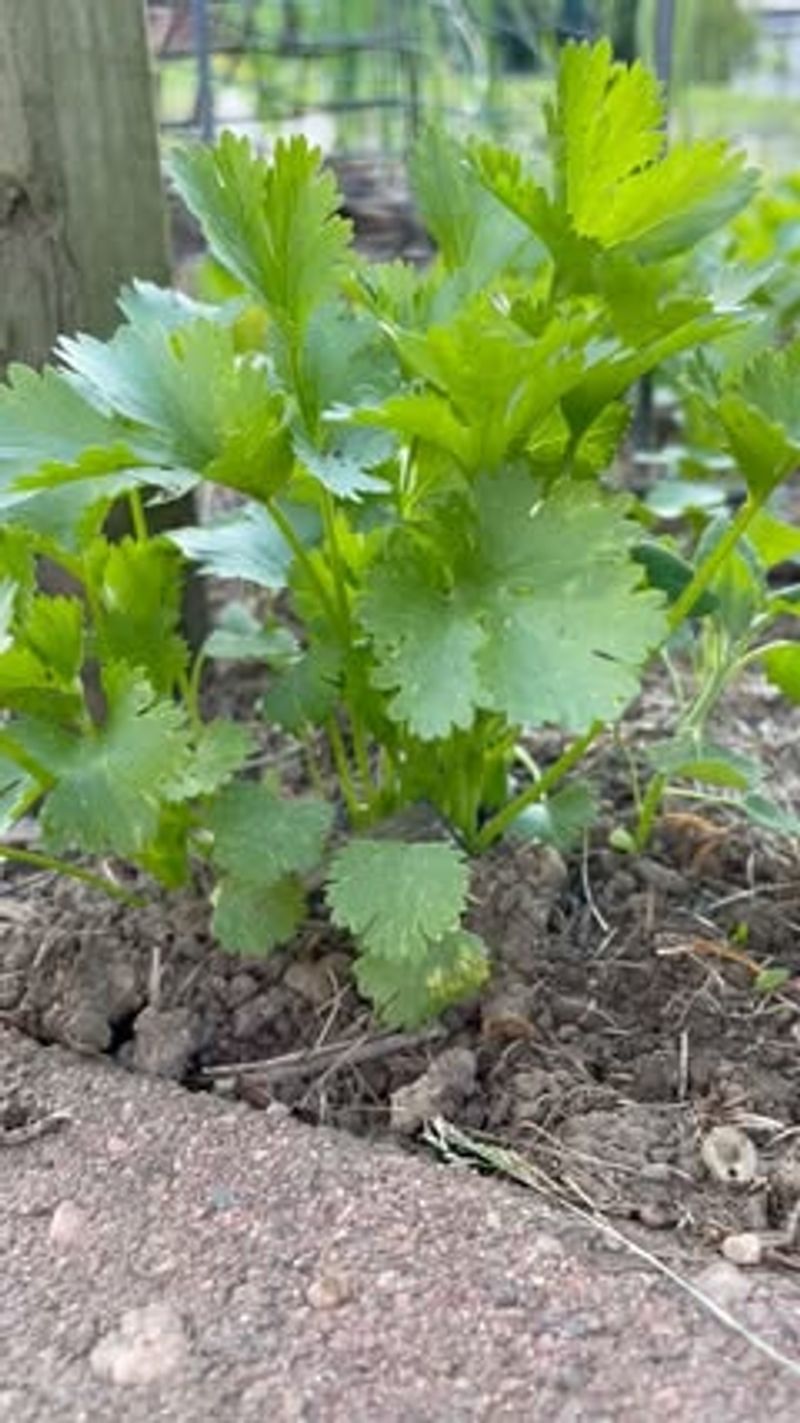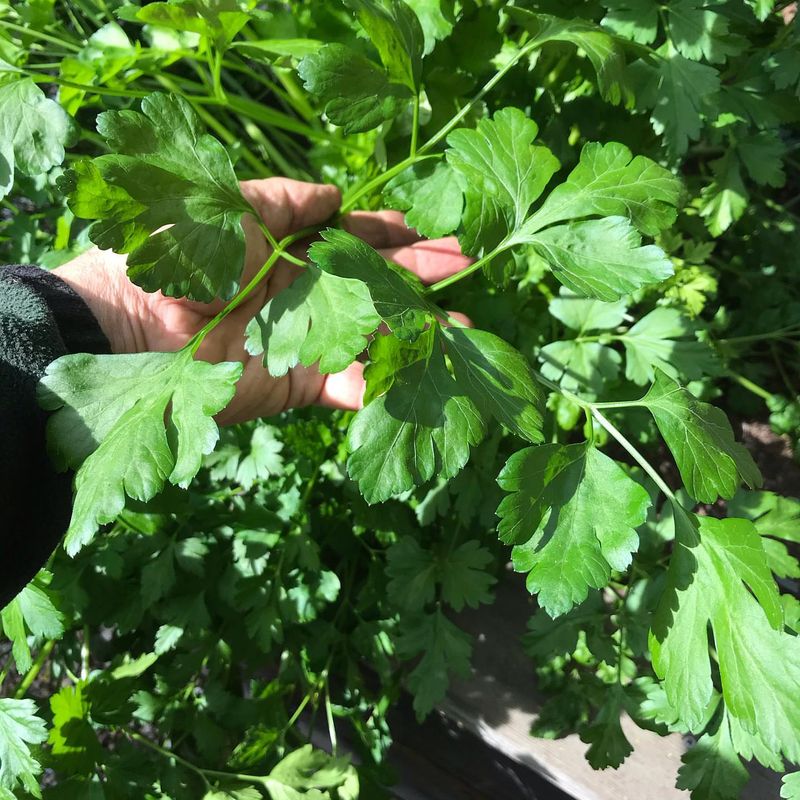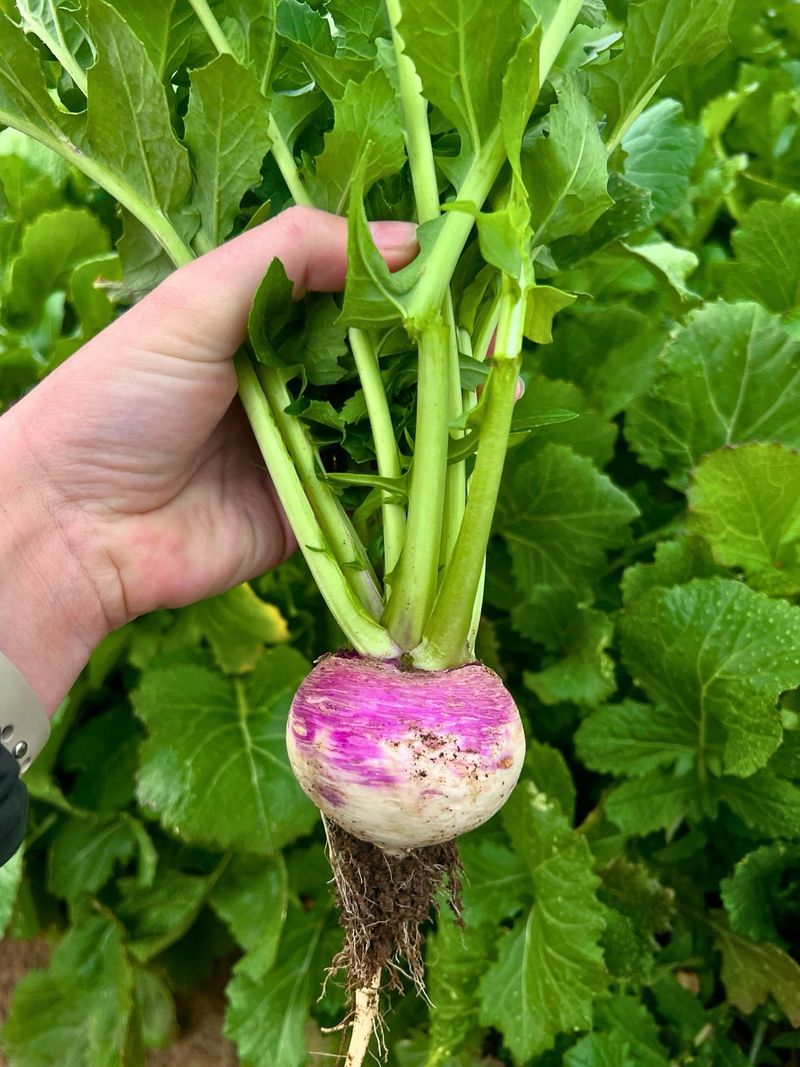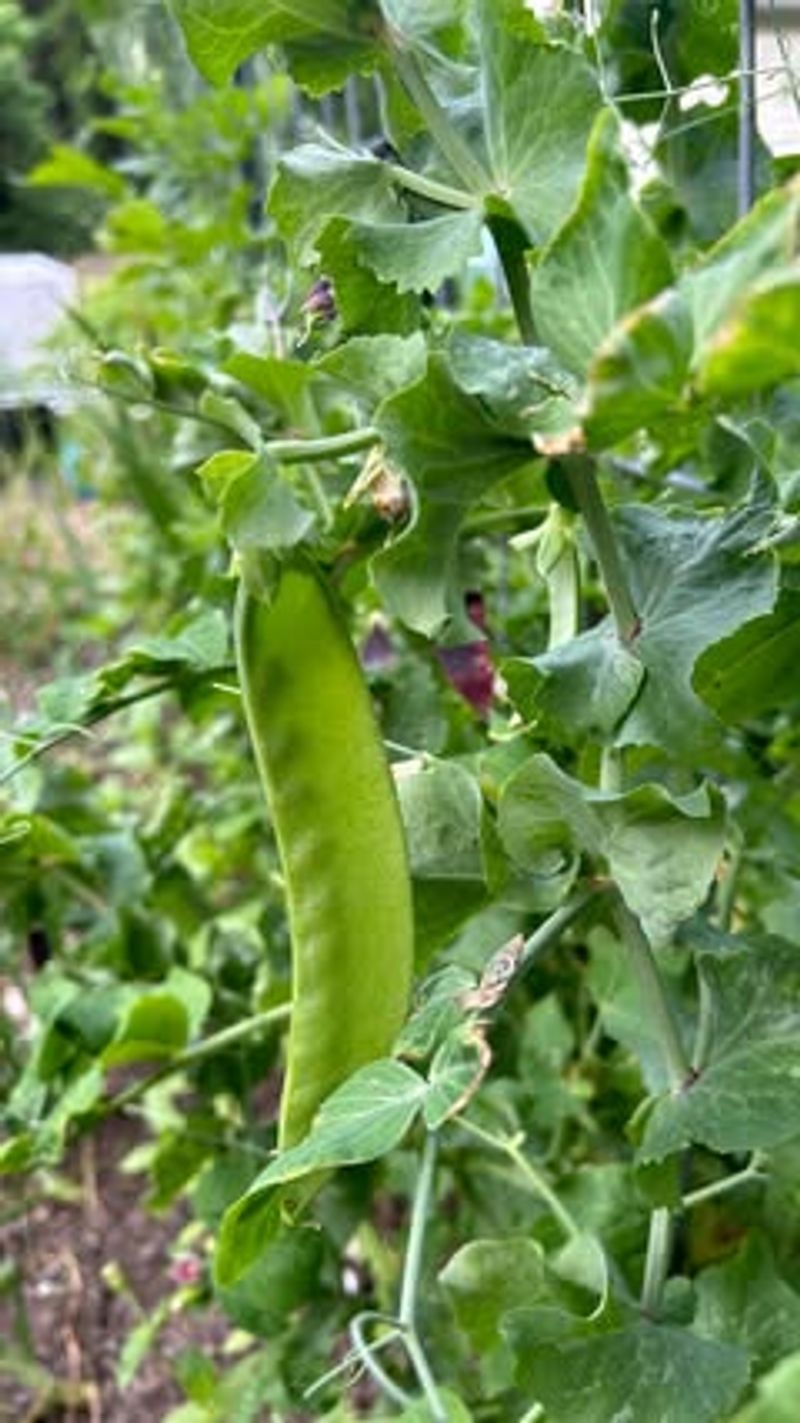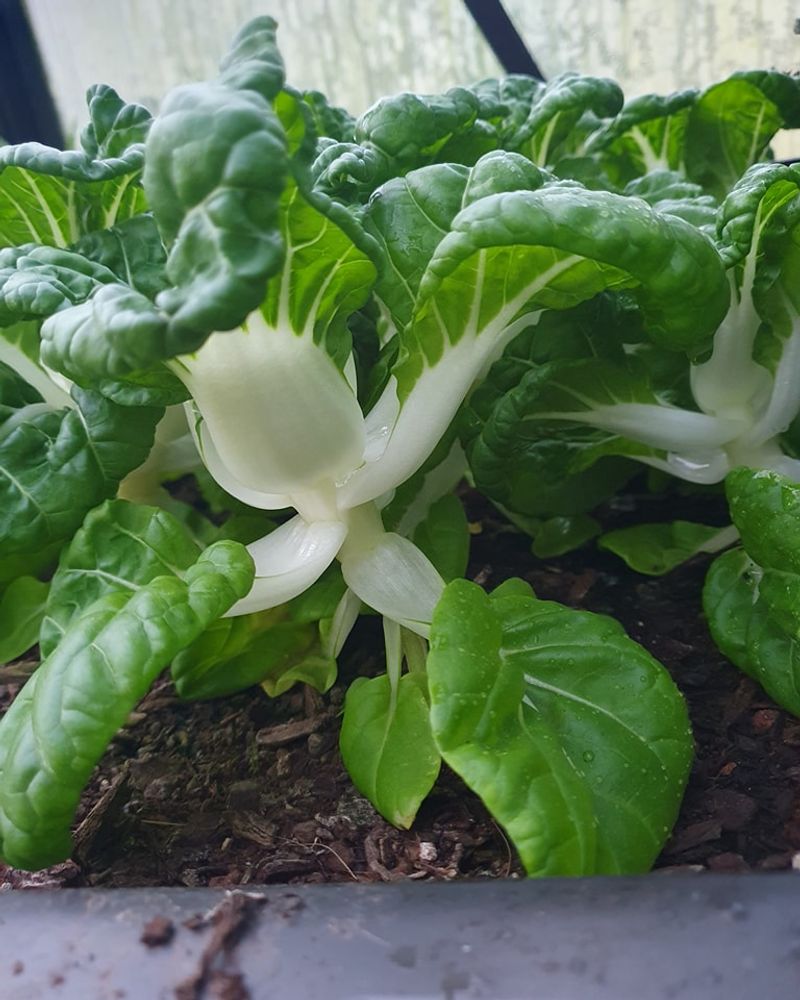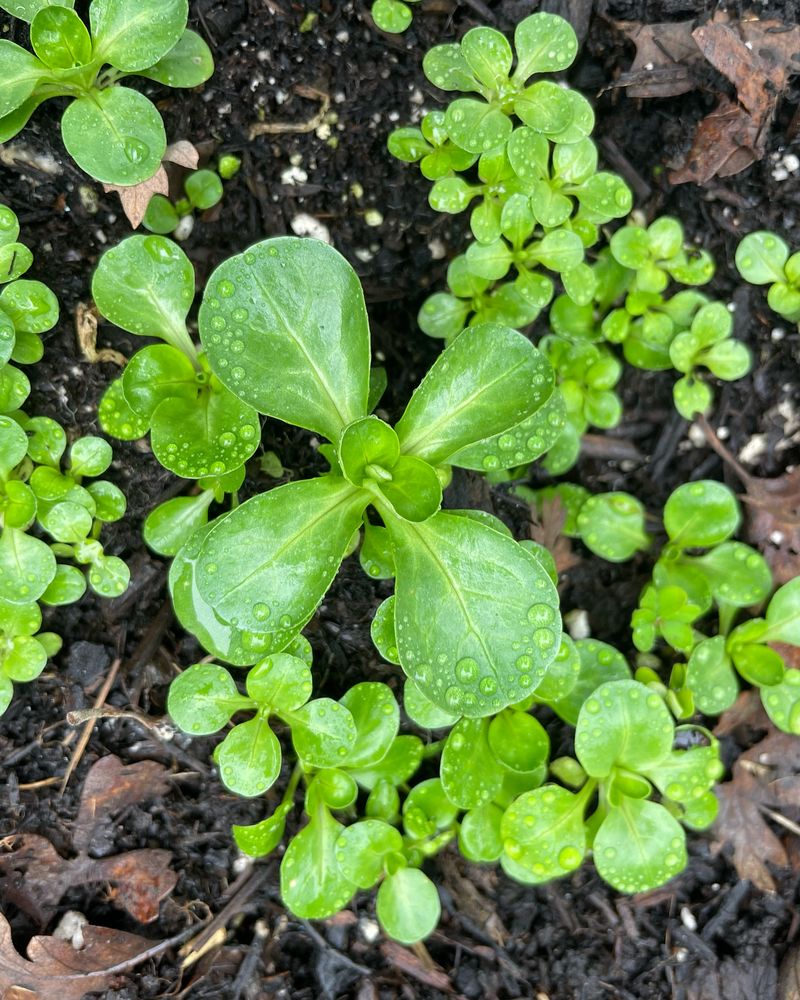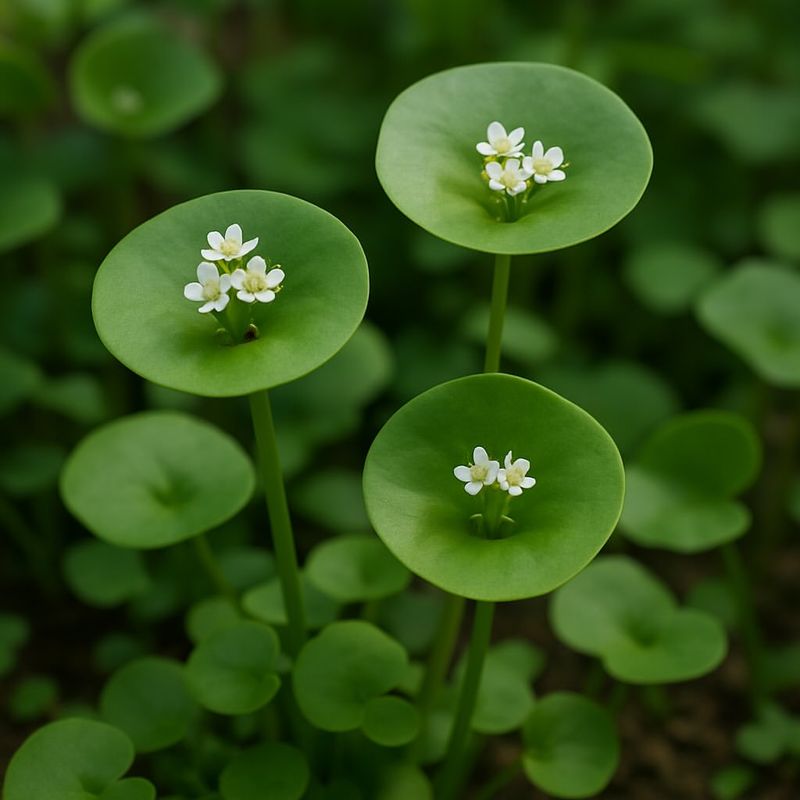Colorado’s growing season can be unpredictable, but an unheated greenhouse opens up exciting possibilities. I’ve experimented with a variety of edible plants that thrive despite chilly temperatures.
Choosing hardy greens, root vegetables, and certain herbs can keep your harvest going longer than expected. Even without warmth, these plants reward patience with fresh, flavorful produce.
Filling your greenhouse with the right edibles turns it into a productive garden haven all season.
1. Kale
Hardy and frost-tolerant, kale actually gets sweeter after exposure to cold temperatures in Colorado’s winter months. The sturdy leaves continue producing well into the colder seasons when other greens have given up.
Many Colorado gardeners harvest kale straight through December in unheated structures. This nutritional powerhouse provides vitamins even when the landscape outside looks barren.
2. Spinach
Unlike its summer-grown counterpart, winter spinach develops a remarkable sweetness when grown in Colorado’s chilly conditions. The cold triggers the plant to convert starches to sugars as a natural antifreeze mechanism.
Many Colorado gardeners find spinach practically maintenance-free in unheated greenhouses. Regular harvesting of outer leaves keeps production going for months longer than outdoor plantings.
3. Swiss Chard
With its rainbow-colored stems, Swiss chard brings beauty and nutrition to your Colorado greenhouse. The large leaves handle temperature fluctuations remarkably well, bouncing back even after brief freezes.
Colorado gardeners appreciate how this cut-and-come-again vegetable produces continuously. Harvest the outer leaves throughout winter, leaving the growing center intact for sustained production.
4. Carrots
Cold temperatures transform carrots into natural sugar factories, making winter-grown roots exceptionally sweet. Plant them in late summer for a continuous Colorado harvest throughout the colder months.
Many gardeners across Colorado use deep containers in their unheated greenhouses for straight, perfect carrots. The soil in containers warms faster than ground soil, giving roots a head start.
5. Lettuce
Fast-growing and versatile, lettuce thrives in the moderate temperatures of Colorado’s unheated greenhouses. Choose loose-leaf varieties that allow for multiple harvests rather than single-head types.
Colorado gardeners can succession plant every few weeks for continuous salad supplies. The controlled environment prevents the bitter taste that outdoor lettuce develops when stressed by weather extremes.
6. Arugula
Spicy and quick-growing, arugula makes excellent use of greenhouse space during Colorado’s colder months. This peppery green reaches harvestable size in just 30 days, perfect for impatient gardeners.
Many Colorado greenhouse growers sow new arugula seeds every two weeks. This succession planting technique ensures continuous harvests of young, tender leaves when outdoor growing is impossible.
7. Radishes
Ready in just 25-30 days, radishes are perfect for Colorado greenhouse growers seeking quick gratification. These crisp root vegetables thrive in the cooler temperatures of unheated structures without bolting as they would in summer heat.
Colorado gardeners can grow unique varieties rarely found in stores. Winter varieties like ‘Watermelon’ and ‘Black Spanish’ develop sweeter flavors in greenhouse conditions than when grown outdoors.
8. Beets
Both beautiful and nutritious, beets perform wonderfully in Colorado’s unheated greenhouses. Their edible roots and greens provide two harvests from one plant, maximizing your growing space efficiency.
Many Colorado gardeners harvest the outer leaves throughout winter while roots develop below. The moderate greenhouse temperatures prevent the woody texture that can develop when beets grow too slowly outdoors.
9. Scallions
Requiring minimal space, scallions are perfect for tucking between larger plants in Colorado greenhouse beds. Their shallow root systems don’t compete heavily with neighboring crops for nutrients or water.
Many Colorado gardeners regrow scallions from grocery store scraps. Simply plant the white root ends with a bit of green attached, and they’ll regrow multiple times in greenhouse conditions.
10. Cilantro
Unlike summer-grown cilantro that bolts quickly, greenhouse-grown cilantro in Colorado’s cool seasons remains leafy for months. The plant actually prefers the moderate temperatures found in unheated winter structures.
Many Colorado gardeners succession plant cilantro every few weeks. This technique ensures continuous harvests of this essential herb for year-round Mexican and Asian cooking.
11. Parsley
Incredibly cold-tolerant, parsley continues growing in Colorado greenhouses even when temperatures occasionally dip below freezing. This biennial herb provides harvests throughout winter and often survives to produce again the following year.
Many Colorado gardeners value parsley beyond its garnish status. The vitamin-rich leaves contribute bright flavor to winter cooking when other fresh herbs are unavailable.
12. Turnips
Quick-maturing and cold-hardy, turnips produce both nutritious roots and edible greens in Colorado’s unheated greenhouses. The white roots develop sweeter flavors when grown in cool conditions rather than summer heat.
Many Colorado gardeners harvest turnip greens continuously while roots develop below. This dual-purpose vegetable maximizes production in limited greenhouse space during winter months.
13. Mustard Greens
Adding spicy punch to winter meals, mustard greens thrive in Colorado’s unheated greenhouse conditions. The plants tolerate temperature fluctuations remarkably well, recovering quickly from occasional cold snaps.
Many Colorado gardeners appreciate how mustard’s strong flavor mellows in cooler growing conditions. The greenhouse environment produces tender leaves without the excessive pungency sometimes found in outdoor-grown plants.
14. Peas
Cold-loving and vertical-growing, peas maximize Colorado greenhouse space by reaching upward rather than spreading out. The tender shoots and flowers are edible too, providing harvests even before pods form.
Many Colorado gardeners grow peas on trellises along north-facing greenhouse walls. This strategic placement prevents them from shading other crops while still producing sweet pods when outdoor growing is impossible.
15. Bok Choy
Fast-growing and cold-tolerant, bok choy reaches harvestable size in just 45 days in Colorado’s unheated greenhouses. The compact plants allow for dense planting, maximizing production in limited space.
Many Colorado gardeners grow miniature varieties for continuous harvests. Baby bok choy varieties can be planted closer together than full-sized types, providing more meals from the same greenhouse space.
16. Mache
Also called corn salad, mache is naturally adapted to Colorado’s winter greenhouse conditions. This uncommon salad green actually prefers cool temperatures and short daylight hours, making it perfect for winter harvests.
Many Colorado gardeners discover mache self-seeds readily in greenhouse beds. Once established, this European delicacy returns year after year with minimal effort, providing nutty-flavored rosettes for winter salads.
17. Claytonia
Sometimes called miner’s lettuce, claytonia produces succulent, vitamin C-rich leaves throughout Colorado’s winter months. This native North American plant naturally thrives in cool conditions with limited light.
Many Colorado gardeners value claytonia’s unique appearance and mild flavor. The round leaves with tiny white flowers emerging from the center add visual interest to winter salads when greenhouse growing options seem limited.


